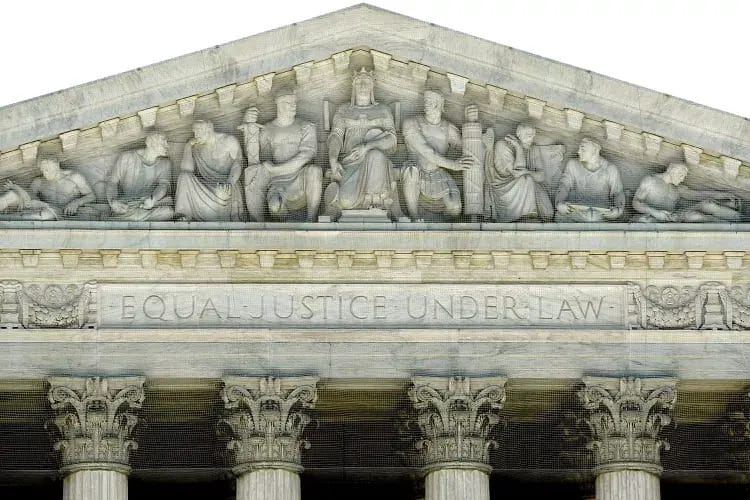The odds of the Supreme Court siding with President Donald Trump on his sweeping tariff powers plunged Wednesday as justices from both ideological wings expressed deep skepticism about his administration’s legal arguments.
Odds on Kalshi’s collapsed to 21%, down nearly 36 points on the day, one of the sharpest intraday drops since the case was accepted for review.
The move coincided almost precisely with oral arguments that saw conservative justices Amy Coney Barrett, Neil Gorsuch, and Brett Kavanaugh question the administration’s expansive interpretation of the International Emergency Economic Powers Act (IEEPA).
“Is it your contention that every country needed to be tariffed?” Barrett asked Solicitor General D. John Sauer, who represented the administration.
The skepticism appeared to trigger a wave of repricing among Kalshi traders, who now see the likelihood of a Trump victory as little better than one in five.
The Court heard arguments Wednesday on whether Trump acted lawfully in imposing emergency tariffs on most global trading partners, a central plank of his second-term economic strategy. The case centers on whether IEEPA, originally designed to give presidents authority to restrict trade with foreign adversaries, also grants power to impose tariffs on friendly nations like Canada and France.
As the Associated Press reported, the hearing produced what observers called a “hot bench.” Chief Justice John Roberts, who often plays a swing role, described the tariffs as implicating the president’s “foreign affairs power” but also pressed both sides on whether tariffs qualify as taxes, a power reserved for Congress.
Neal Katyal, representing the coalition of companies challenging the tariffs, invoked the 1952 Youngstown Sheet & Tube Co. v. Sawyer case, which limited presidential seizure powers during wartime. He argued that Trump’s use of IEEPA “goes far beyond anything Congress intended,” while Oregon Solicitor General Benjamin Gutman, representing twelve states, conceded that the president may restrict trade in an emergency but said the administration “overstepped by turning a suspension power into a tax policy.”
Market warns of lopsided ruling:
Kalshi traders appear to be bracing for a decisive ruling. A related Kalshi market forecasting how many Supreme Court justices will vote for Trump’s tariffs now predicts an average of just 2.8 votes, implying a 6–3 or even 7–2 outcome against the administration.
The most likely outcomes, according to market pricing, are one to three votes in Trump’s favor, each carrying roughly 17–19% probability. Scenarios where five or more justices back the administration have fallen sharply.
The two markets together signal that traders are interpreting the justices’ tone as a near-complete rejection of Trump’s legal theory. Total trading volume across both contracts topped $400,000 by midday Wednesday, underscoring the high stakes and public interest in what could be one of the term’s defining separation-of-powers cases.
Why it matters:
The administration has defended the tariffs as part of a broad foreign-policy strategy meant to deter unfair trade practices abroad and protect U.S. industries. Trump’s team argues that the IEEPA’s language grants presidents “expansive authority” to act during emergencies, a claim opponents say could upend decades of congressional control over tariff policy.
A ruling against Trump could significantly curtail his use of emergency powers across multiple fronts, including trade, sanctions, and energy. It could also prompt refunds of billions in tariff revenue collected under the contested orders, an outcome Justice Barrett described as a potential “mess.”.
The takeaway
Kalshi markets now forecast:
Together, the markets portray a dramatic loss of confidence following Wednesday’s hearing. Traders appear to believe the justices, even many conservatives, are unwilling to endorse the broad executive authority Trump has claimed over U.S. trade.
If those signals prove correct, the tariffs case could become a landmark ruling limiting presidential economic powers and reshaping the balance between the White House and Congress.
However, while the Court expedited the case, there is no guarantee of a fast decision. Analysts expect a ruling before the end of the term, though an earlier judgment remains possible given the economic and political implications
This article may contain content generated with the assistance of artificial intelligence. It is provided for informational purposes only and does not constitute investment, trading, financial, or legal advice. Any opinions or market commentary are not recommendations. Trading involves risk, and you should carefully evaluate your financial situation and consult a qualified advisor before making any trading decisions.
